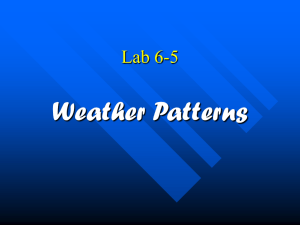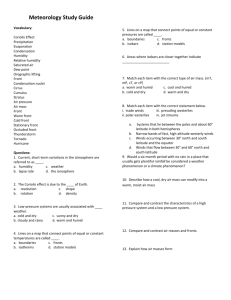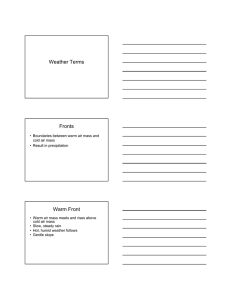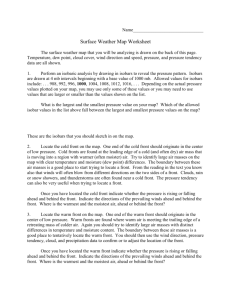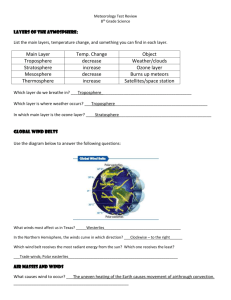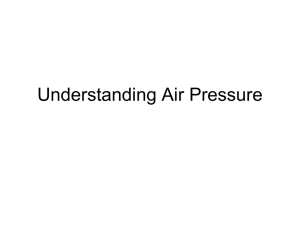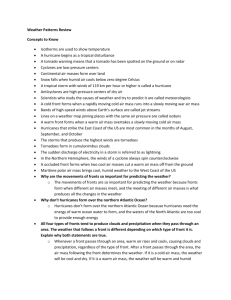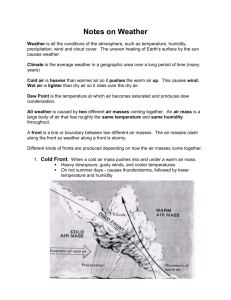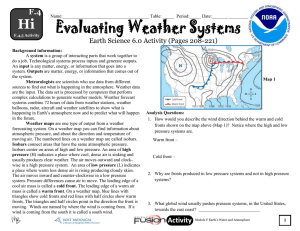Marking Period 4 Benchmark Study Guide
advertisement
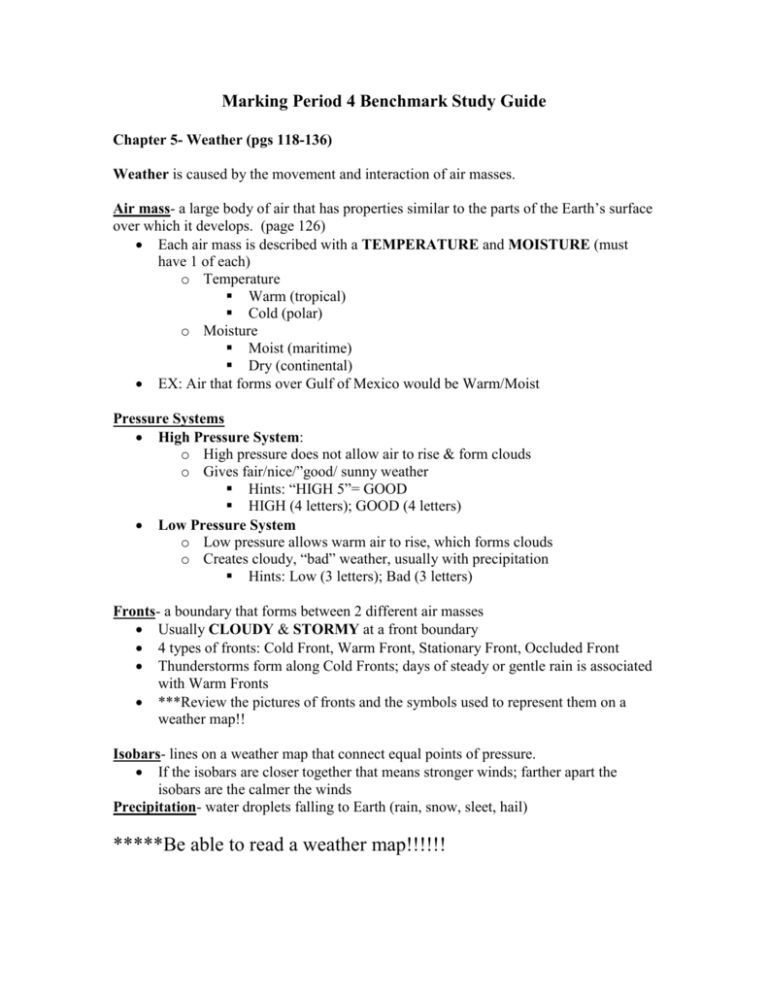
Marking Period 4 Benchmark Study Guide Chapter 5- Weather (pgs 118-136) Weather is caused by the movement and interaction of air masses. Air mass- a large body of air that has properties similar to the parts of the Earth’s surface over which it develops. (page 126) Each air mass is described with a TEMPERATURE and MOISTURE (must have 1 of each) o Temperature Warm (tropical) Cold (polar) o Moisture Moist (maritime) Dry (continental) EX: Air that forms over Gulf of Mexico would be Warm/Moist Pressure Systems High Pressure System: o High pressure does not allow air to rise & form clouds o Gives fair/nice/”good/ sunny weather Hints: “HIGH 5”= GOOD HIGH (4 letters); GOOD (4 letters) Low Pressure System o Low pressure allows warm air to rise, which forms clouds o Creates cloudy, “bad” weather, usually with precipitation Hints: Low (3 letters); Bad (3 letters) Fronts- a boundary that forms between 2 different air masses Usually CLOUDY & STORMY at a front boundary 4 types of fronts: Cold Front, Warm Front, Stationary Front, Occluded Front Thunderstorms form along Cold Fronts; days of steady or gentle rain is associated with Warm Fronts ***Review the pictures of fronts and the symbols used to represent them on a weather map!! Isobars- lines on a weather map that connect equal points of pressure. If the isobars are closer together that means stronger winds; farther apart the isobars are the calmer the winds Precipitation- water droplets falling to Earth (rain, snow, sleet, hail) *****Be able to read a weather map!!!!!! Chapter 4- Atmosphere Air Pressure The higher you go up in the atmosphere the less dense the air is because there are fewer air molecules Heat Transfer 1) Conduction- heat transfer through direct contact 2) Convection- heat transfer through the flow of material a. Cold material sinks because it is more dense; warm material rises because it is less dense 3) Radiation- heat that travels in the form of RAYS or WAVES\ Gases in the Atmosphere o Nitrogen (78%), Oxygen (21%), Other (1%) Layers of the Atmosphere- know the characteristics of each layer 1) Troposphere- where we live, weather, air is highest in pressure here 2) Stratosphere- contain the ozone layer that protects us from UV Rays 3) Mesosphere- where meteoroids burn up 4) Thermosphere- hottest layer a. Ionosphere- contains electrically charged particles 5) Exosphere-exits into outer space Winds (are named from the direction where they come from) GLOBAL WINDS- (page 104-106) o Doldrums o East Trade Winds o Prevailing Westerlies- moves weather across US o Polar Easterlies o Jet Stream LOCAL WINDS- (page 107) land cools & heats more quickly than land o Sea Breeze o Land Breeze Water Cycle Precipitation Condensation Transpiration Evaporation Groundwater Runoff 2) Think Genetics!!!! Draw a Punnett Square and list 3 probabilities about the results.
